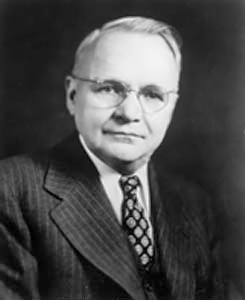Harry Nyquist (nonfiction)
Harry Nyquist (né Harry Theodor Nyqvist; /ˈnaɪkwɪst/, Swedish: [nʏːkvɪst]; February 7, 1889 – April 4, 1976) was a Swedish born American electronic engineer who made important contributions to communication theory.
He worked at AT&T's Department of Development and Research from 1917 to 1934, and continued when it became Bell Telephone Laboratories that year, until his retirement in 1954.
Nyquist received the IRE Medal of Honor in 1960 for "fundamental contributions to a quantitative understanding of thermal noise, data transmission and negative feedback." In October 1960 he was awarded the Stuart Ballantine Medal of the Franklin Institute "for his theoretical analyses and practical inventions in the field of communications systems during the past forty years including, particularly, his original work in the theories of telegraph transmission, thermal noise in electric conductors, and in the history of feedback systems." In 1969 he was awarded the National Academy of Engineering's fourth Founder's Medal "in recognition of his many fundamental contributions to engineering." In 1975 Nyquist received together with Hendrik Bode the Rufus Oldenburger Medal from the American Society of Mechanical Engineers.
As an engineer at Bell Laboratories, Nyquist did important work on thermal noise ("Johnson–Nyquist noise"), the stability of feedback amplifiers, telegraphy, facsimile, television, and other important communications problems. With Herbert E. Ives, he helped to develop AT&T's first facsimile machines that were made public in 1924. In 1932, he published a classic paper on stability of feedback amplifiers. The Nyquist stability criterion can now be found in all textbooks on feedback control theory.
His early theoretical work on determining the bandwidth requirements for transmitting information laid the foundations for later advances by Claude Shannon, which led to the development of information theory. In particular, Nyquist determined that the number of independent pulses that could be put through a telegraph channel per unit time is limited to twice the bandwidth of the channel, and published his results in the papers Certain factors affecting telegraph speed (1924) and Certain topics in Telegraph Transmission Theory (1928). This rule is essentially a dual of what is now known as the Nyquist–Shannon sampling theorem.
In the News
Fiction cross-reference
Nonfiction cross-reference
External links:
- Harry Nyquist @ Wikipedia
